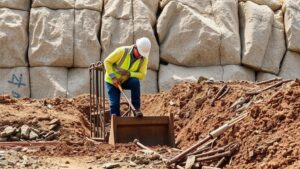Mapping Historical Settlements Using Logical Grid-Based Searches
Mapping Historical Settlements Using Logical Grid-Based Searches
Mapping historical settlements is an essential aspect of understanding human civilizations spatial development and socio-economic dynamics. The emergence of Logical Grid-Based Searches (LGBS) as a methodological approach has significantly refined the process of identifying, analyzing, and visualizing these settlements. This article delves into the principles of logical grid-based searching, how it aids in mapping historical settlements, the technologies involved, and real-world applications that elucidate its importance.
The Concept of Logical Grid-Based Searches
Logical Grid-Based Searches involve partitioning geographic areas into evenly sized grids for systematic exploration and analysis. Each grid cell acts as a unit of analysis, allowing researchers to apply various search algorithms efficiently. This technique aligns well with Geographic Information Systems (GIS) and spatial analysis methodologies, enabling the robust handling of spatial data.
Grid-based searching is characterized by its adaptability in various scales, from local community mapping to extensive regional analyses. For example, a 1 km² grid could be utilized to study the distribution of ancient settlements across an entire country, while a 100 m² grid might be more suitable for detailed investigations in a smaller town.
Advantages of Grid-Based Searches in Historical Mapping
- Systematic Coverage: Grid-based searches ensure comprehensive area coverage, minimizing the risk of overlooking essential historical data.
- Enhanced Data Integration: Various forms of data–such as archaeological findings, historical documents, and satellite imagery–can be neatly organized within grid structures for better synthesis.
- Quantitative Analysis: The method allows for statistical analysis of settlement patterns, enabling researchers to identify trends and anomalies effectively.
Technological Integration in LGBS
The implementation of Logical Grid-Based Searches leverages advanced technologies such as GIS software, remote sensing, and database management systems. GIS platforms allow researchers to create, manipulate, and visualize spatial data using LGBS methodology. Tools like QGIS or ArcGIS provide functionalities to overlay historical maps with contemporary data for comprehensive analyses.
Remote sensing data, collected from satellites, can be integrated within the grid system to identify specific environmental changes that may point to historical settlements. For example, infrared satellite imagery can reveal crop marks where ancient structures remain buried, enabling researchers to update grid maps systematically with new findings.
Case Studies Demonstrating LGBS
Several research projects have showcased the effectiveness of logical grid-based searches in mapping historical settlements:
- Catalhoyuk, Turkey: In a comprehensive study of this Neolithic site, researchers employed grid-based searching to systematically analyze spatial patterns of domestic structures. structured approach facilitated a clear understanding of the social organization and spatial layout of one of the worlds first urban settlements.
- Pre-Columbian Cities in Mesoamerica: Utilizing LGBS, archaeologists have mapped extensive networks of settlements across Central America. By dividing regions into grids, teams could focus on specific areas, revealing the extensive trade routes and urban planning within ancient Maya and Aztec civilizations.
Challenges and Considerations
While logical grid-based searches offer significant benefits, researchers must be aware of potential challenges. One primary concern is the arbitrary nature of grid sizes, which may overlook critical contextual data if not appropriately matched to the study area. Plus, relying heavily on digital tools demands an understanding of their limitations, including resolution constraints in remote sensing data.
Also, interdisciplinary collaboration is essential. Historical and archaeological insights must inform the grid system, ensuring that researchers do not solely rely on quantitative analysis without context. Engaging with historians and anthropologists during the mapping process can enrich the interpretation of archaeological findings significantly.
Conclusion and Actionable Takeaways
In summary, mapping historical settlements through logical grid-based searches is a powerful approach that enhances the systematic exploration of ancient societies. By combining grid methodologies with advanced technologies, researchers can uncover intricate patterns of human settlement and interaction.
For practitioners and scholars interested in adopting this methodology, the following actionable takeaways can be beneficial:
- Evaluate the appropriate grid size and shape based on the geographic and historical context of the study.
- Integrate multiple data sources–archaeological, textual, and spatial–to provide a comprehensive picture of historical settlement patterns.
- Encourage interdisciplinary collaboration to bridge the gap between quantitative data and qualitative insights.
By employing logical grid-based searches effectively, researchers can contribute to a more nuanced understanding of human historical geography, yielding insights that inform both academic study and cultural heritage management.


